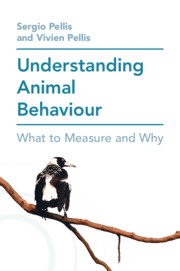Book contents
- Frontmatter
- Contents
- Preface
- Acknowledgements
- 1 What Is the Problem and What Is the Solution?
- 2 Behaviour as a Means, Not an End
- 3 The Deep Structure of Behaviour
- 4 The Brain Is Not Alone
- 5 Bringing It All Together: Steps in the Descriptive Process
- 6 What of the Future?
- Epilogue
- Appendix A: Eshkol-Wachman Movement Notation and Descriptive Analysis
- Appendix B: Practice, Practice, Practice
- References
- Index
1 - What Is the Problem and What Is the Solution?
Published online by Cambridge University Press: 11 May 2021
- Frontmatter
- Contents
- Preface
- Acknowledgements
- 1 What Is the Problem and What Is the Solution?
- 2 Behaviour as a Means, Not an End
- 3 The Deep Structure of Behaviour
- 4 The Brain Is Not Alone
- 5 Bringing It All Together: Steps in the Descriptive Process
- 6 What of the Future?
- Epilogue
- Appendix A: Eshkol-Wachman Movement Notation and Descriptive Analysis
- Appendix B: Practice, Practice, Practice
- References
- Index
Summary
As an empirical science, the study of animal behaviour involves measurement. When an animal engages in a series of actions, such as exploring or catching prey, the problem becomes that of identifying suitable components from that stream of action to use as markers suitable to score. The markers selected reflect the observer’s hypothesis of the organisation of the behaviour. Unfortunately, in most cases, researchers only provide heuristic descriptions of what they measure. To make the study of animal behaviour more scientific, the hypotheses underlying the decision of what to measure should be made explicit so as to allow them to be tested. Using hypothesis testing as a guiding framework, several principles that have been shown to be useful in identifying behavioural organisation are presented, providing a starting point in deciding what markers to select for measurement.
- Type
- Chapter
- Information
- Understanding Animal BehaviourWhat to Measure and Why, pp. 1 - 22Publisher: Cambridge University PressPrint publication year: 2021

